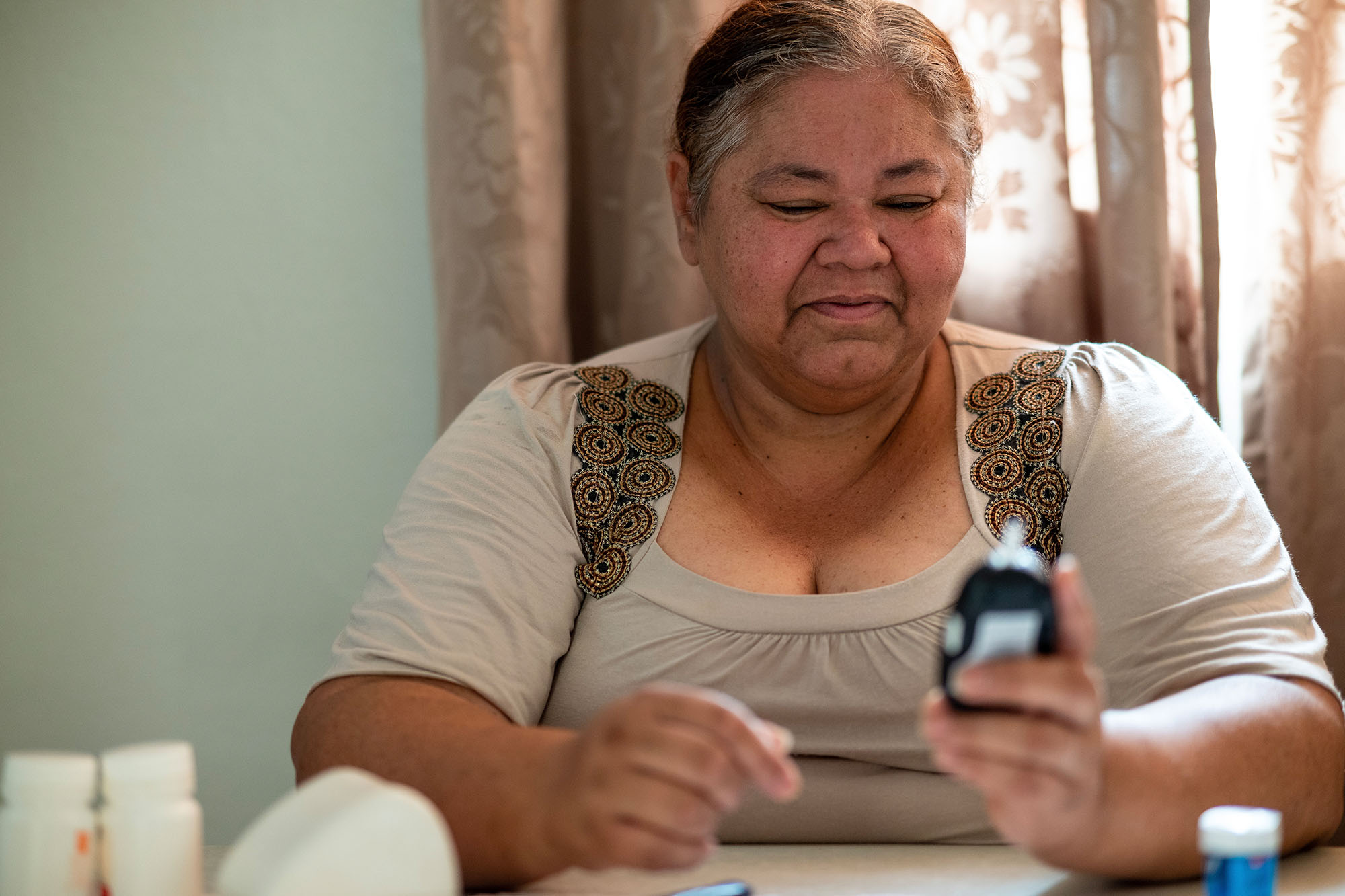Key takeaways
- This February 2025 poll found that Californians, across party lines, overwhelmingly support Medi-Cal.
- There is little support for cutting federal Medi-Cal funding among Republicans, Democrats, or Independents.
- Large majorities of Californians say Medi-Cal is working well, but anxiety about the program’s future is high.
Executive Summary
In February 2025, NORC at the University of Chicago fielded a 12-question poll among a representative sample of Californians to assess attitudes about Medi-Cal, Covered California, and possible reductions to federal funding for both programs.
Key findings include these:
- Californians across party lines overwhelmingly support Medi-Cal. Eighty percent (80%) of Democrats, 75% of Independents, and 62% of Republicans agree that the program should generally stay as it is today (Question 7).
- There is little support for cutting federal Medi-Cal funding among Republicans, Democrats, or Independents. Across party lines, there is little support for reducing federal funding for Medi-Cal: Only 13% of Californians favor cuts to federal funding for the program. Five percent (5%) of Democrats, 13% of Independents, and 27% of Republicans support cuts (Question 5). Only 12% of Californians believe federal spending on Medi-Cal is excessive (Question 6), and 73% support maintaining its current scale (Question 7).
- Californians continue to believe everyone should have access to health coverage. Three in four (75%) Californians think everyone in the state should have health insurance coverage, even if it means increasing federal spending. Strong majorities of Democrats (91%) and Independents (76%), as well as half of Republicans (50%) hold this view (Question 11).
- Medi-Cal is widely viewed as important to the state — and most Californians across party lines say the program is “personally” important to them. An overwhelming majority of Californians (91%) believe Medi-Cal is important to the state. This view is held by 98% of Democrats, 83% of Independents, and 85% of Republicans (Question 1). Over half of Californians (54%) — including 55% of Democrats, 61% of Independents, and 50% of Republicans — view Medi-Cal as personally important to them and their families (Question 2). Majorities of Californians across political affiliations have either received Medi-Cal benefits themselves or have family members who have (Question 3).
- Large majorities of Californians say Medi-Cal is working well, but anxiety about the program’s future is high. Nearly six in 10 (58%) Californians say Medi-Cal is working well for most. Two-thirds (66%) of Democrats, more than half (55%) of Independents, and nearly half (46%) of Republicans agree. Among those who have been in Medi-Cal or have a family member in the program, over 70% say it’s working well (Question 4). Anxiety about Medi-Cal is high, with two-thirds (67%) of Californians worried that enrollees will not be able to access the same level of benefits in the future that they do today (Question 12a).
Explore the full poll results below, with breakdowns by income, race, party affiliation, and personal experience with Medi-Cal.
Poll Questions
Question 1 Finding: Across income, race/ethnicity, political party, and personal experience with Medi-Cal, well over 80% of Californians believe Medi-Cal is important to the state of California.
Question 2 Finding: Over half (54%) of all Californians, including 55% of Democrats, 61% of Independents, and 50% of Republicans, say Medi-Cal is important to them and their families.
Question 3 Finding: Over half (54%) of all Californians say they or a family member have been personally enrolled in or helped by Medi-Cal. This is also true for over half of all Democrats, Independents, and Republicans.
Question 4 Finding: Nearly six in 10 (58%) Californians say Medi-Cal is working well for most. Two-thirds of Democrats, 55% of Independents, and nearly half (46%) of Republicans agree. Among those who have been in Medi-Cal or have a family member who has been in the program, over 70% say it’s working well.
Question 5 Finding: Across party lines, there is little support for reducing federal funding for Medi-Cal: Only 13% of all Californians favor federal cuts. Five percent (5%) of Democrats, 13% of Independents, and 27% of Republicans support cuts.
Question 6 Finding: Across income, race/ethnicity, party affiliation, and personal experience with the program, very small percentages of Californians say that the federal government spends too much on Medi-Cal. Just 12% of all Californians believe this, including 4% of Democrats and 27% of Republicans.
Question 7 Finding: When asked to pick between maintaining how Medi-Cal is financed and run today or making changes, nearly three in four (73%) Californians, including nearly two-thirds (62%) of Republicans, said they preferred keeping the program as it is.
Question 8 Finding: More than 8 in 10 (81%) Californians say that Covered California is important for providing health insurance to those who are uninsured.
Question 9 Finding: More than half (53%) of all Californians think Covered California is working well.
Question 10 Finding: Just 34% of Californians favor reducing federal affordability subsidies for those who get insurance through Covered California.
Question 11 Finding: Three in four (75%) Californians, including 91% of Democrats, 76% of Independents, and 50% of Republicans, believe that everyone in California should have health insurance, even if it means increasing federal spending on health care.
Question 12a Finding: More than two in three (67%) Californians worry that future Medi-Cal enrollees will not get the same level of benefits that are available to people today.
Question 12b Finding: More than two in three (68%) Californians worry that future Covered California enrollees will not get the same level of benefits that are available to people today.
Methodology
This survey was conducted by NORC at the University of Chicago on behalf of the California Health Care Foundation. The survey was funded by the California Health Care Foundation. Data were collected using AmeriSpeak®, NORC’s probability-based panel designed to be representative of the US household population. During the initial recruitment phase of the panel, randomly selected US households were sampled with a known, non-zero probability of selection from the NORC National Sample Frame and then contacted by US mail, email, telephone, and field interviewers (face-to-face). The panel provides sample coverage of approximately 97% of the US household population. Those excluded from the sample include people with P.O. Box-only addresses, some addresses not listed in the USPS Delivery Sequence File, and some newly constructed dwellings.
Interviews for this survey were conducted February 4 through February 12, 2025, with adults age 18 and over representing the state of California. Panel members were randomly drawn from AmeriSpeak®, and 1,033 completed the survey — 1,017 via the web and 16 via telephone. Panel members were invited by email or by phone from a NORC telephone interviewer. Interviews were conducted in English or Spanish, depending on the respondent’s preference. Respondents were offered a small monetary incentive for completing the survey. The final stage completion rate is 16.5%, the weighted household panel response rate is 26.1%, and the weighted household panel retention rate is 77.8%, for a cumulative response rate of 3.4%. The overall margin of sampling error is +/- 4.2 percentage points at the 95% confidence level, including the design effect. The margin of sampling error may be higher for subgroups. Sampling error is only one of many potential sources of error and there may be other unmeasured errors in this or any other survey.
Quality assurance checks were conducted to ensure data quality. In total, 55 interviews were removed for nonresponse to at least 50% of the questions asked of them or for completing the survey in less than one-third the median interview time for the full sample. These interviews were excluded from the data file prior to weighting.
Once the sample has been selected and fielded, and all the study data have been collected and made final, a poststratification process is used to adjust for any survey nonresponse as well as any noncoverage or under and oversampling resulting from the study-specific sample design.
Poststratification variables included age, gender, census division, race/ethnicity, and education. Weighting variables were obtained from the 2024 Current Population Survey. The weighted data reflect the California population of adults age 18 and over.
Authors & Contributors
NORC at the University of Chicago





